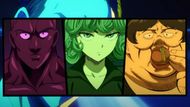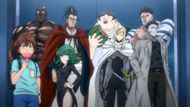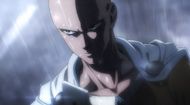J.C. Staff has once again become a lightning rod for anime discourse following One Punch Man Season 3’s premiere. But before the pitchforks come out, it’s important to understand one thing: this isn’t J.C. Staff’s fault.
The studio is simply operating within Japan’s brutal animation production system, where real control lies not with animators but with production committees. In a recent livestream with KOL: Requiem, One Piece animator Vincent Chansard, known for his work on the Gear 5 episode, spoke out about the constant backlash aimed at J.C. Staff.

“A lot of people blame J.C. Staff,” he said, “but it’s a bit more complex. Sometimes it’s not about the animation studio; sometimes it’s about the production committee that is on top of everything.”
Chansard went on to describe the harsh reality of the anime industry, impossible deadlines, underpaid animators, and an unrelenting global audience that expects cinematic quality every week. “J.C. Staff is just a studio that’s trained to survive,” he added. And that statement hits harder than any Saitama punch.
The real culprit: Production committees, not J.C. Staff

Fans often forget that anime studios like J.C. Staff don’t own the series they animate. They’re hired guns, paid to deliver what the production committee dictates, within strict financial and time limits.
The production committee, which includes major companies like Bandai Namco, Shueisha, and TV networks, decides everything: how much money goes into the project, how long the studio has, and even which staff get hired.
So when fans complain that One Punch Man Season 3 looks “cheap” or “stiff,” the blame shouldn’t go to the animators working overtime; it should go to the corporate side that cuts corners for profit. This is the same system that rushed Season 2’s schedule and likely pushed Season 3 into production before it was ready.
Episode 1 wasn’t bad; it was strategic

Let’s be honest, Episode 1 of Season 3 wasn’t flashy. It was dialogue-heavy, more akin to a boardroom drama than a superhero showdown. But it wasn’t bad. It served its purpose: setting up the sprawling Monster Association arc.
The limited animation wasn’t laziness; it was resource management. Studios often conserve their budget early on so they can go all out when the big battles arrive. People forget the same thing happened with That Time I Got Reincarnated as a Slime Season 3.
Fans called it “boring” until the later episodes exploded with top-tier animation. The same will likely happen here. J.C. Staff is saving their best animators and resources for the Garou vs. Saitama arc, the emotional and visual centerpiece of the season.
And for what it’s worth, the art direction is miles better than Season 2’s. The outlines are cleaner, character designs are consistent, and the new lighting techniques add cinematic weight. It’s not Madhouse’s fluidity, sure, but it’s not the disaster people make it out to be.
The internet’s overreaction problem

What’s frustrating isn’t the criticism, it’s the exaggeration. Every thread about Season 3 gets swamped by negativity, with fans declaring the series “dead on arrival” after just one episode. The same people who say “it’s over” are the first to hop back on the hype train the moment a single action clip drops. It’s not a genuine critique; it’s performative outrage.
The truth is, One Punch Man Season 3 didn’t take six years to make. Actual production only began less than a year ago after years of limbo. Expecting perfection in Episode 1 of a late-stage shonen adaptation, under modern anime conditions, is simply unrealistic.
A reality check for the One Punch Man fandom

Anime production in 2025 is a battlefield. J.C. Staff, for all its flaws, is one of the few studios still standing after decades of grind. The fact that they’re still around and still adapting One Punch Man at all is proof of resilience, not incompetence.
As fans, the least we can do is separate the business reality from the art. Critique the result, sure, but understand why it looks the way it does. J.C. Staff didn’t ruin One Punch Man. They’re trying to keep it alive.
